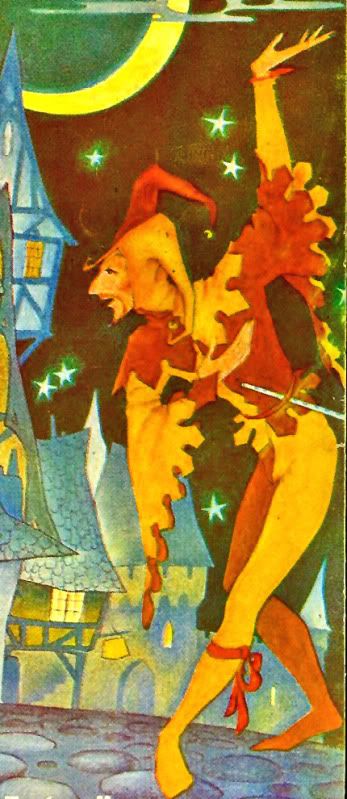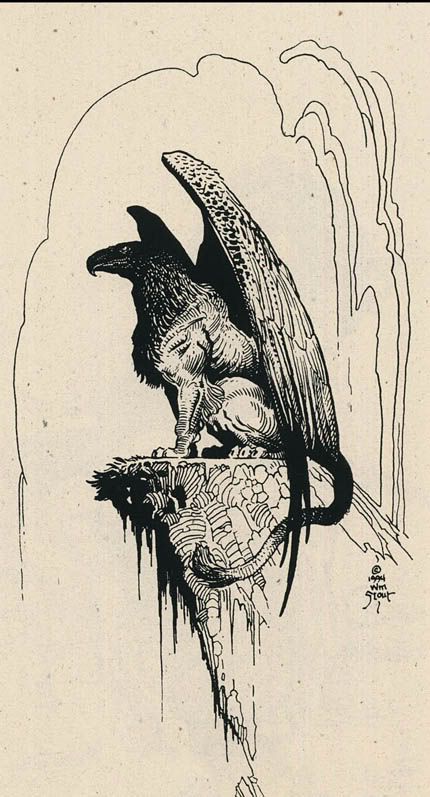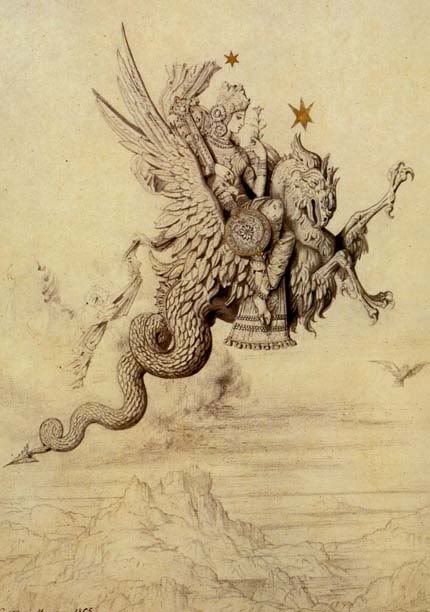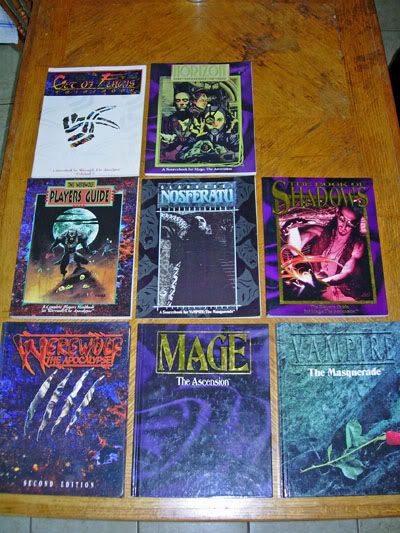
Notes upon the subtle distinctions betwixt, and the hidden hierarchy of, the many fold thieves of Wyrd Greyhawk.
Those who commit theft or fraud may be thieves in action, yet not thieves in class.
The greater part of the NPC inhabitants of Wyrd Greyhawk are not classed characters at all, but merely 1 hit die Men as per the Monster Manual entry.
Persons generally seen as thieves, rogues, scoundrels, tricksters, beggars, knaves, or other such followers of underworld vocations may be practitioners of particular methods of illicit income generation without actually being Thief Class Characters.
In order to distinguish them from PC or NPC Thief Class Characters, they are referred to as Lesser Thieves. Such non-Thief thieves may have some ability in a particular type of thieving ability, such as a greater than normal chance of picking pockets, yet no other ability expected of a genuine Thief Class Character.
As an example; Luhn the Nip, Hit Dice: 1, (hp4), Armor Class: 9, Move: 12”, (120’ per round), Dagger, Special Ability: Pick Pockets as 5th level thief, (50%).
Luhn is a thief of opportunity. A barrel maker’s apprentice, during holidays, fairs, or other gatherings he uses his naturally deft hands, enhanced by a hornblade, a sliver of sharp horn glued to the edge of his thumb nail, to cut purses. Luhn is non-descript, lumpish and dull. Nothing about his appearance will indicate he is anything other than a stolid laborer. On occasion, Luhn allies with amenable barmaids or dancing girls willing to distract a mark in exchange for a share in the ill-gotten gains.
The majority of thieves that PCs might encounter are persons such as Luhn. Not professionals of the Class as are Player Character Class Thieves, but unclassed opportunists of varying degrees of skill and organization.
Such persons may have some skill in any one of the normal thief’s abilities and practice their trade accordingly. A scallywag with the ability to Climb Walls may specialize as a second-story man. A vagabond who can Hide in Shadows, or Move Silently might become an information broker. A scoundrel with the ability to Find/Remove Traps, or Open Locks could rely on breaking and entering.
Some of the more common types of lesser thieves include;
Curbers or Anglers, thieves who steal by reaching hooked staffs or canes through open windows to snatch whatever sellable object presents itself. Curbers may pretend to be blind men or elderly and infirm pedlars, so that their angling sticks may be taken for supports and not recognized for the thieves tools they are.
Divers, a sort of lesser thief-master, who commonly employs small boys, dissipated halflings, or perhaps gnomes of low character, to wriggle through small openings and steal, or open doors from within.
Bludgeoners, who rob only those they may attack from behind and only if they have surprise. They employ clubs, saps or similar weapons. Bludgeoners have a 55% chance of rendering a victim unconscious for 10 rounds if they successfully hit with surprise. If this attack fails, the bludgeoner will immediately retreat. They are not at all interested in a stand up fight.
Bawdy Baskets, itinerant female pedlars and whores of opportunity. With her basket of pins, ribbons, horn cups, caps, wooden spoons and other homely oddments, the bawdy basket seeks entrance into homes, ostensibly to peddle her wares. If the opportunity presents itself, she will be quick to engage in either pilferage or prostitution. A bawdy basket is also likely to act as the eyes of more aggressive thieves, relaying information on things worth stealing and methods of entrance.
Cleymsters are beggars of a most insistent sort who are experts in mimicking the effects of the most fearsome poxes and plagues as well as false sores and lesions. Cleymsters will relentlessly paw at and beg for coin from marks, who most often give them what they want in order to escape as quickly as possible. Occasionally they may work with a cutpurse or foist who takes advantage of the attention they draw in order to pick pockets. PCs who have never encountered a cleymster before will certainly be taken in by their appearance of illness unless they have cause to be suspicious.
Ignoblemen, are masters of confidence and pretense. Arrayed in costly clothing and finery, and attended by servants and footmen, an ignobleman pretends to membership in the aristocracy, usually a travelling noble of some far off land. Ostentatiously sweeping through some sleepy town, burgh, thorp or village, the ignobleman and his entourage will demand lodging, victuals and entertainment. Such is the force of the ignobleman’s manner and charisma that the truth of his assertions of authority and promises of payment are rarely questioned by the towns’ people.
For at time, the ignobleman and his retinue of thieves will live at the villager’s expense while stealing whatever they may, and then when the sham seems soon to be discovered, or the payments for their revelry come due, they will decamp in the night, taking with them whatever they may carry.
Charlatans are similarly confidence men, but usually choose a single, rich victim and spin a web of lies, tales, and false promises in order to lure the mark into willingly giving over his coin in expectation of greater returns on the investment. As does an Ignobleman, a Charlatan expertly pretends to a station or profession which will bestow respectability or expertise upon him in the eyes of the mark. Charlatans are often lesser thieves of high intelligence possessing the Thief’s Skill Read Person. (Read Person allows the thief a % chance to discover a person’s main motive, or greatest desire if able to engage them in conversation for a turn.)
Mobbers are groups of lesser thieves who engage in a sort of en masse pickpocketry. Once they have chosen a wealthy appearing target, the mobbers divide into two groups, blend with the crowd, and maneuver to place the mark between them. Once the target reaches an appropriate location, such as a busy street or market, the two groups suddenly, and loudly, “recognize” each other as deadly enemies and attack. The mark will be caught between them and quickly find himself on the bottom of a pile of flailing fists and thrashing legs. In moments, one group of mobbers will disengage and flee with the second in close pursuit. When the mark manages to pick himself up off the street, he will find that he has been stripped of every item of value which the mobbers might have observed, as well as any pieces of clothing which might have caught the dastards fancy.
The Upright Man. An Upright Man is as much a preyer upon thieves as he is himself a thief. He is acknowledged by the thieves of a given area as a sort of self-appointed Lord and judge. This position he acquires and maintains solely through force of personality, bullying, and manipulation.
An upright man may decide the outcome of conflicts between thieves. He may demand a share in the loot of others. He will rarely participate in the schemes of those he dominates. An upright man often insinuates, and in truth has, ties to the Thieves Guild of the nearest large city. An upright man may be feared by the thieves he encounters, avoided by them when possible, but will be deferred to if not obeyed.
This is only a partial listing of the many infamous specialties in which thieves of the lower sort may practice. The ingenuity and cleverness which they devote towards avoiding the necessity of honest work rivals that of the greatest engineer or artist.
These individuals may operate singly or in informal groups depending upon their preferred methods of thievery. These are not the powerful criminal organizations of the great cities generally referred to as Thieves Guilds, but rather transitory crews of independent thieves and vagabonds. These groups most commonly operate in lesser cities, towns and villages, at events or celebrations such as fairs and tournaments, and in traveler’s taverns, alehouses, brothels, baths and road side Inns.
Small crews are likely to practice a repertoire of grifts and doges depending upon the circumstances. Pretending to represent secular or religious powers in order to levy fraudulent taxes, the selling of false potions and charms, cheating at dice and rigging the outcome of “impromptu” contests with strangers, etc. Any such endeavor which promises the possibility of quick gains without the drudgery of practicing an honest trade.

The Guilds.
Only in the largest and richest cities may be found those shadowed companies known as Thieves Guilds. This term covers a broad assortment of criminal organizations of various sorts. Never will they operate openly as such, even in the most corrupt and decadent city they are hidden behind a veil of propriety and legitimacy.
As with the canting crews of the towns and countryside, no more than a few of the guild members are actually Thief Class Characters. The majority are lesser thieves, porters, teamsters, smugglers, officials of city and court, clerks, forgers, debasers of coin, thugs, enforcers, slayers, spies, fences, or other such 1 hit die Men.
It is likely that actual Thief, Fighter, and Assassin class NPCs of formidable ability hold most of the positions of power within the structure of a guild.
The difference between guild and crew is one of organization and culture as well as method of operation. The crews are often temporary and transient, with direct thievery and fraud of individuals as their goal. They do not survive losses of leaders or members, breaking apart and coming together as circumstances dictate, and moving where ever the pickings seem richest.
The guilds are permanent organizations which hold and control specific territory, usually penetrating government and business, often with complex traditions and subtle rules which are known only to those initiated into the thieves’ mysteries. Whereas the thieves of town and country employ their skills to support themselves as individuals, the members of a great city’s guild act as vassals of the guild master, or guild masters. A kind of criminal feudality in which vassal serves master and master provides for vassal. Though leadership may pass between individuals, this presents no threat to the existence of the guild itself. As they say in Rauxes, “Thieves may die, but the Guild is eternal.”
Simple thievery generates but a small part of the income of a guild. In fact, most of the known guilds do not allow pilfering by their members to get out of hand. The guilds thrive in the shadows and the notoriety brought by overt crime is bad for trade. PC thieves and thieves not affiliated with a guild will be closely watched by guild members if recognized for what they are.
Instead, guilds control and engage in crimes which provide a more steady and reliable stream of revenue.
Smuggling is one of the mainstays of guild business. In any given city there are things which are both desired by the populace, and forbidden to them by the Powers That Be. These things may be weapons, drink, intoxicating substances, etc, the guilds are pleased to supply such items at suitable prices, often passing on to the Forbidding Powers a portion of the proceeds. As illicit items command a greater price when sold under the table than they would if sold legally in an honest market, the portion which goes to the Forbidding Powers is likewise greater than if a simple tax were levied on the sale of said items.
In many cases it may be difficult to discern where the Thieves’ Guild ends and the government begins.
Gambling, in all its many forms, is also a favored guild enterprise. In any large city, the guild nearly always has a hand in any form of established gambling. From cock fighting and owlbear baiting to horse racing and pit fighting, from back room tavern dice games to lotteries and official raffles, the guild will be present in some way to collect its share of the proceeds. In many situations, the guild itself is the sponsor of the event, from behind its mask of legitimate enterprise. If not, certainly those in charge will be persuaded that partnership with the guild is in everyone’s best interests.
Prostitution is likewise most often controlled by the guild in any large city, either directly or indirectly. Successful wayfarers and adventurers, returning to civilization flush with victory and laden with loot, should always remember that the tarts, trollops and courtesans so eager to welcome them and celebrate their great deeds, are also likely the eyes and ears of the Guild. Beside the income generated by their expected skills, information gathering can pay handsomely.
The forgery, of licenses, writs, deeds, letters of passage, or of marquee, grants of authority to collect taxes, or other valuable documents is often also an important guild business.
The nature of the known Thieves Guilds varies greatly depending upon local culture. What may be expected of one may not be so of another.

The Thieves Guild of Rauxes, capital of the Great Kingdom, is baroque in character, subtle in action, immersed deeply in ritual and formal conduct, and evil without the merest glimmer of remorse.
The richest and most powerful, as well as the oldest known Guild, only the Guild of the city of Greyhawk itself rivals the influence of Rauxes.
The Guild of Rauxes is never referred to as such; no acknowledgment of any formal organization will ever be forthcoming from any member in good standing. Instead, the phrase, “Men of Understanding” is used to indicate association with the Guild. The usage arises from the habit of guild thieves to conclude negotiations with the words, “Do we have an understanding?”, or similar words to that effect. Likewise, the phrase, “It is understood that”, may be used to indicate the will of the Guild.
“ Fisilious the glass merchant has become somewhat dawdling in his gratuities. It is understood that this state of affairs cannot continue.”
The Men of Understanding pursue all avenues of illicit endeavor, but are most infamous for subterfuge in pursuit of information, which they broker to those unscrupulous enough to deal with them, assassination, blackmail, slave trading of specialized type, to satisfy rarified tastes, and other, darker, rumored businesses.
So adept at skullduggery are the Guild Thieves of Rauxes, that few King’s Spymasters are willing to risk their pawns in direct conflict with them. Even the insidious and deadly agents of the Scarlet Brotherhood have on more than one occasion, been out maneuvered and forced to withdraw by the ruthless Guild of Rauxes.
The existence of the Thieves Guild of the City of Greyhawk is commonly known, though it is still not talked about openly. Of all such organizations it is the one which most closely follows the form of an actual trade guild. The Guild of Greyhawk is pragmatic, well organized and business minded. Revenge is an indulgence which the Greyhawk thieves largely eschew. Thievery is a trade and a rival one day may become a partner the next day. Vengeance does not buy wine.

The guild of Niole Dra in Keoland is another creature altogether. Rather than forming a unified organization, the thieves of Niole Dra align themselves with a hand full of especially talented individuals to form schools of thievery.
The whole resembles a colony of rival artists, each of whom has a particular style and essential character and his own group of students, emulators and hangers-on.
The thieves of Niole Dra refer to themselves as the Skillful Players and this is a true indicator of the culture of the guild. Many of them are actors, musicians, and artists. Though, of course, they are thieves through and through, to the Skillful Players the act of thievery itself is of equal import as the loot gained thereby. The greater the daring and audacity of the theft, the greater the style and panache with which it is carried out, the more it is admired and its perpetrator acclaimed. Standing within the guild is adjudged by the style with which members carry out their acts of thievery.
Amongst those who have the knowledge and experience to judge, the Skillful Players are held to be both the least evil of thieves, and also the least dependable.
The Guild which operates from Rel Mord in Nyrond has an infamous reputation as a nest of clever schemers and robber lenders who practice complex frauds more often and with greater success than other guilds.
The Coin Counters of Rel Mord, as they are known, are swindlers of rich merchants and unwary aristocracy alike. The forgery of documents and counterfeiting of seals and coinage are also specialties of the changer-thieves. The guildsmen of Rel Mord have no qualms about the use of violence to achieve their goals, but it is never a first resort. Careful legal maneuvering, bribery and blackmail will be employed first, with paid assassins of the highest skill retained only when all else fails.
The Hard Bargainers of Irongate, are tough minded, unbending, cruel humored and loyal, at least towards each other. Smuggling is the major source of their income, and they care not what the cargo may be. The Irongate guild has ties to various pirate groups and is pleased to aid them in disposing of their ill gotten gains.
This is, of course, but a handful of examples of existing thieves guilds.
Assumptions about the nature of, and adjustments too, the Thief Player Character Class for Wyrd Greyhawk.
The purpose of the thief is to steal. This means the thief’s goal is to gain the greatest returns with the least effort and least personal danger. All but the most swashbuckling of thieves will normally avoid melee combat unless the situation is distinctly in their favor.
At the same time, the Player Character thief is no run of the mill knave. Lesser Thieves steal to avoid the effort of work. Guild thieves desire wealth, to be respected or feared, and the power bestowed by membership. The player Character thief is a cut above these unimaginative sorts of thieves. Though a scoundrel and a ne’er-do-well, the PC thief is often a bit of a madcap and a daredevil, with, “at least a diamond chip of the spirit of true adventure”, in the words of the Great Chronicler.
Lesser thieves would never risk life and limb to pluck the jewel eyes from a dark God’s idol when easy marks are to be had playing at tavern dice. Guild thieves would never dare dungeon corridors or ancient tombs when there are shop keeps to be muscled or black lotus of Greyhawk to be smuggled. Only Fortune’s fools, the Adventuring Thieves, risk all to win all.
The Thief Class of Wyrd Greyhawk is the 1E AD&D thief with minor adjustments.
The % chances for success of the thief’s abilities are assumed to be over and above the chance (determined by DM fiat) of a non-thief succeeding in an attempt to accomplish the same act. If an ordinary, non-classed man might have a 10% chance of hiding in shadows in a given situation, then a thief would have a base 10% chance, plus the percentage given due to his level of ability.
All thief PCs receive a +25% bonus to a single thief ability. Which skill receives the bonus may be determined randomly, or the player may be allowed to choose. This bonus is meant to reflect a natural talent for a particular skill. A certain aptitude in one area of thievery, “That lads a born cutpurse!”
No thief’s ability can ever exceed a 95% chance of success regardless of level or bonuses.
Expanded thief’s skills include; Read Person, see the Charlatan entry above, which requires a wisdom score of 12 or more. Also Assess Relative Value, which allows at thief to intuitively choose the most valuable item in a given collection of objects.
In a campaign which includes no demi-human PCs as party members, I also allow thief player characters to utilize the dwarf’s racial ability to Detect Grade or Slope in Passage, and Detect Sliding or Shifting Walls or Rooms as well as the elf’s racial ability to Detect Secret or Concealed Doors.
----------------------
Real world issues, a craptastic internet connection, and winter lassitude have really cut into my blog posting lately. It irks me. I'm not going away anytime soon though, so don't take me off your blog lists. I'll soldier on and eventually the stars will re align for the OGGA.
Koo-koo-katchoo!


















